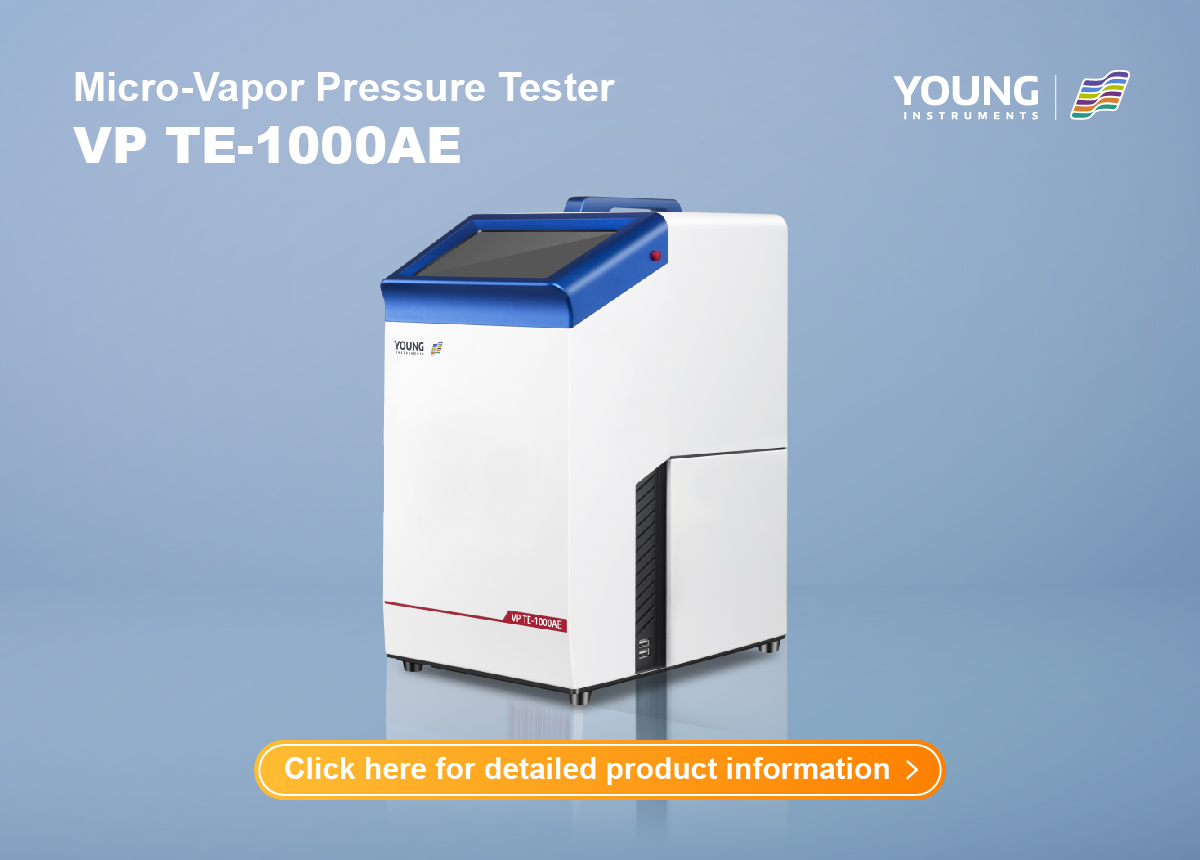Auto Vapor Pressure Tester: Key Features and Benefits
If you work in the automotive industry, you know how important it is to maintain the quality of your products. One key factor in ensuring the quality of your products is to accurately measure the vapor pressure of fuels and other petroleum products. This is where an auto vapor pressure tester comes in handy.
An auto vapor pressure tester is a specialized instrument that measures the vapor pressure of fuels and other petroleum products. It is an essential tool for anyone involved in the production, storage, or transportation of these products. By measuring the vapor pressure, you can ensure that your products meet industry standards and are safe for use.
Investing in an auto vapor pressure tester is a wise decision for any business involved in the production or transportation of fuels and other petroleum products. It allows you to accurately measure the vapor pressure of your products, ensuring that they meet industry standards and are safe for use. With this tool, you can maintain the quality of your products and ensure the safety of your customers.
Fundamentals of Vapor Pressure Testing
Principles of Vapor Pressure
Vapor pressure is defined as the pressure exerted by a vapor in thermodynamic equilibrium with its condensed phases at a given temperature in a closed system. In simpler terms, vapor pressure is the measure of a substance’s ability to evaporate. The higher the vapor pressure, the easier it is for a substance to evaporate.
Vapor pressure testing is an important method for measuring the volatility of liquids and gases. It is a fundamental property of any substance and is crucial in determining the behavior of the substance in various environments.
Importance of Vapor Testing in Auto Industry
In the automotive industry, vapor pressure testing is a crucial step in ensuring the quality and safety of fuels. Fuel with a high vapor pressure can lead to increased emissions, decreased fuel economy, and even engine damage.
Auto Vapor Pressure Testers are designed to accurately measure the vapor pressure of fuels, including gasoline, diesel, and jet fuel. These testers are used by fuel manufacturers, refineries, and regulatory agencies to ensure compliance with industry standards and government regulations.
By using an Auto Vapor Pressure Tester, you can ensure that your fuel meets the required specifications and is safe for use in vehicles. This can help to reduce emissions, improve fuel efficiency, and prevent engine damage.
Overall, vapor pressure testing is a critical step in the production and regulation of fuels in the automotive industry. By understanding the principles of vapor pressure and the importance of vapor testing, you can ensure that your fuel is of the highest quality and meets industry standards.

Auto Vapor Pressure Tester Design
When it comes to testing the vapor pressure of fuels and other volatile petroleum products, an auto vapor pressure tester is an essential tool. These testers come in various designs, but they all have the same basic components and functionality.
Components and Functionality
An auto vapor pressure tester typically consists of a pressure vessel, a temperature control system, and a pressure measurement system. The pressure vessel is where the sample is placed and subjected to specific conditions, such as temperature and pressure, to determine its vapor pressure. The temperature control system ensures that the sample is at the correct temperature, while the pressure measurement system measures the pressure inside the vessel.
In addition to these basic components, some auto vapor pressure testers may include additional features, such as automatic pressure control, automatic sample loading, and computerized data collection and analysis.
Types of Vapor Pressure Testers
There are two main types of vapor pressure testers: Reid vapor pressure testers and dynamic vapor pressure testers. Reid vapor pressure testers measure the vapor pressure of a sample at a constant temperature and pressure, while dynamic vapor pressure testers measure the vapor pressure of a sample as the temperature and pressure change.
Reid vapor pressure testers are the most common type of auto vapor pressure tester and are widely used in the petroleum industry. They are relatively simple to operate and provide accurate results. Dynamic vapor pressure testers, on the other hand, are more complex and expensive, but they can provide more detailed information about the vapor pressure behavior of a sample.
Overall, the design of an auto vapor pressure tester is crucial to its functionality and accuracy. By understanding the basic components and types of vapor pressure testers, you can choose the right tester for your needs and ensure accurate and reliable results.

Operational Guidelines
Test Procedure
When using an Auto Vapor Pressure Tester, it is important to follow the correct test procedure to ensure accurate results. First, ensure that the instrument is properly calibrated according to the manufacturer’s instructions. This will ensure that the instrument is measuring vapor pressure accurately.
Next, fill the test vessel with the sample to be tested. It is important to ensure that the vessel is properly sealed to avoid any leaks during testing. Once the vessel is filled and sealed, place it in the instrument and initiate the test.
During the test, it is important to monitor the pressure and temperature of the sample. This will ensure that the test is running smoothly and that the instrument is properly measuring the vapor pressure of the sample. Once the test is complete, record the results and clean the test vessel according to the manufacturer’s instructions.
Safety and Maintenance
When using an Auto Vapor Pressure Tester, it is important to follow proper safety procedures to avoid any accidents or injuries. Before using the instrument, ensure that all safety features are properly installed and functioning.
During testing, always wear appropriate personal protective equipment such as gloves and safety glasses. Avoid touching any hot surfaces and keep the instrument away from any flammable materials.
After testing, it is important to properly clean and maintain the instrument to ensure its longevity. Follow the manufacturer’s instructions for cleaning and maintenance to avoid any damage to the instrument.
Regularly inspect the instrument for any signs of wear or damage and replace any worn or damaged parts immediately. This will ensure that the instrument continues to function properly and provide accurate results.
Performance Metrics
When it comes to choosing an auto vapor pressure tester, you want to make sure that it is reliable and accurate. Here are the two most important performance metrics to consider:
Accuracy and Calibration
One of the most important performance metrics of an auto vapor pressure tester is its accuracy. You want to make sure that the instrument is calibrated properly and provides accurate results. A well-calibrated instrument will provide results that are within the expected range, and you can trust them to be reliable.
To ensure that your auto vapor pressure tester is calibrated properly, you should follow the manufacturer’s instructions for calibration and maintenance. Some instruments come with an automatic calibration feature, which can save you time and effort.
Repeatability and Reproducibility
Another important performance metric is the repeatability and reproducibility of the instrument. Repeatability refers to the ability of the instrument to produce the same result when the same sample is tested multiple times. Reproducibility refers to the ability of the instrument to produce the same result when different operators use the same instrument to test the same sample.
A good auto vapor pressure tester should have high repeatability and reproducibility. This ensures that the results are consistent and reliable, regardless of who is using the instrument or how many times the sample is tested.
To ensure that your auto vapor pressure tester has high repeatability and reproducibility, you should follow the manufacturer’s instructions for sample preparation and testing. You should also ensure that the instrument is properly maintained and calibrated.
In summary, when choosing an auto vapor pressure tester, it is important to consider its accuracy and calibration, as well as its repeatability and reproducibility. By choosing an instrument with high performance metrics, you can ensure that your results are reliable and consistent.
Regulatory Standards
When selecting an Auto Vapor Pressure Tester, it is important to consider regulatory standards, which ensure that the instrument meets the necessary requirements for testing. There are various regulatory standards that you should be aware of, including ASTM Compliance and International Testing Standards.
ASTM Compliance
ASTM International is an organization that develops and publishes technical standards for a wide range of materials, products, systems, and services. Many Auto Vapor Pressure Testers comply with ASTM standards, which provide a set of guidelines for testing procedures and specifications. ASTM D323 and D5191 are two common standards used for testing the vapor pressure of petroleum products. The former is used to determine the Reid vapor pressure of gasoline, while the latter is used to determine the vapor pressure of crude oil.
Auto Vapor Pressure Testers that comply with ASTM standards are designed to provide accurate and reliable results, which are essential for ensuring product quality and safety. Compliance with ASTM standards also ensures that the instrument meets the necessary requirements for regulatory compliance, which is essential for companies that are involved in the production, transportation, and distribution of petroleum products.
International Testing Standards
In addition to ASTM standards, there are also various international testing standards that you should be aware of when selecting an Auto Vapor Pressure Tester. These standards are developed by organizations such as the International Organization for Standardization (ISO) and the European Committee for Standardization (CEN).
ISO 3007 is a standard that specifies a method for determining the vapor pressure of petroleum products using automatic vapor pressure testers. This standard provides a set of guidelines for testing procedures and specifications, which ensure that the instrument provides accurate and reliable results.
CEN/TS 15267-3 is another standard that specifies a method for determining the vapor pressure of gaseous fuels using automatic vapor pressure testers. This standard provides a set of guidelines for testing procedures and specifications, which ensure that the instrument meets the necessary requirements for regulatory compliance.
When selecting an Auto Vapor Pressure Tester, it is important to consider both ASTM Compliance and International Testing Standards to ensure that the instrument meets the necessary requirements for testing. Compliance with these standards provides assurance that the instrument provides accurate and reliable results, which are essential for ensuring product quality and safety.







































